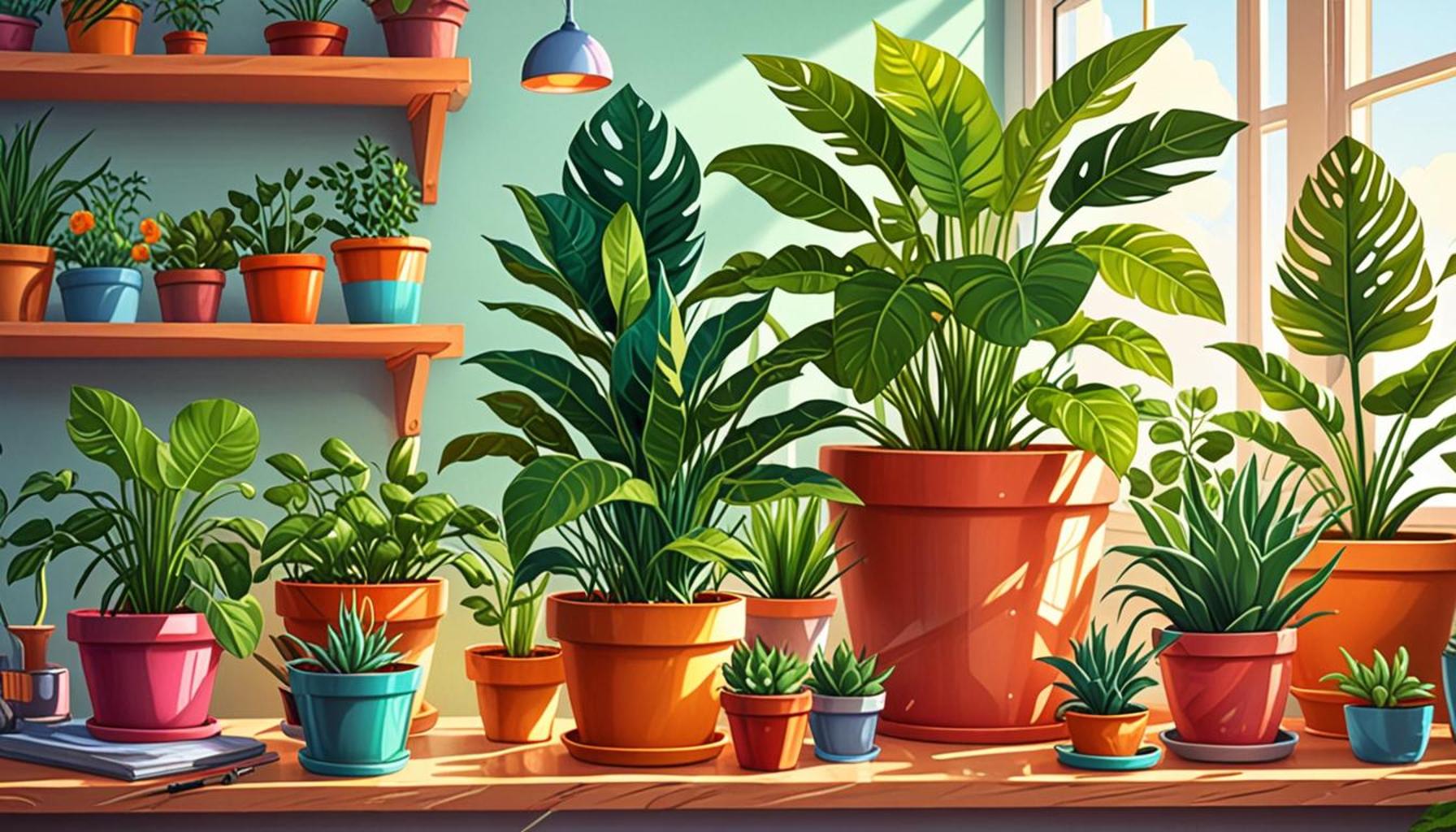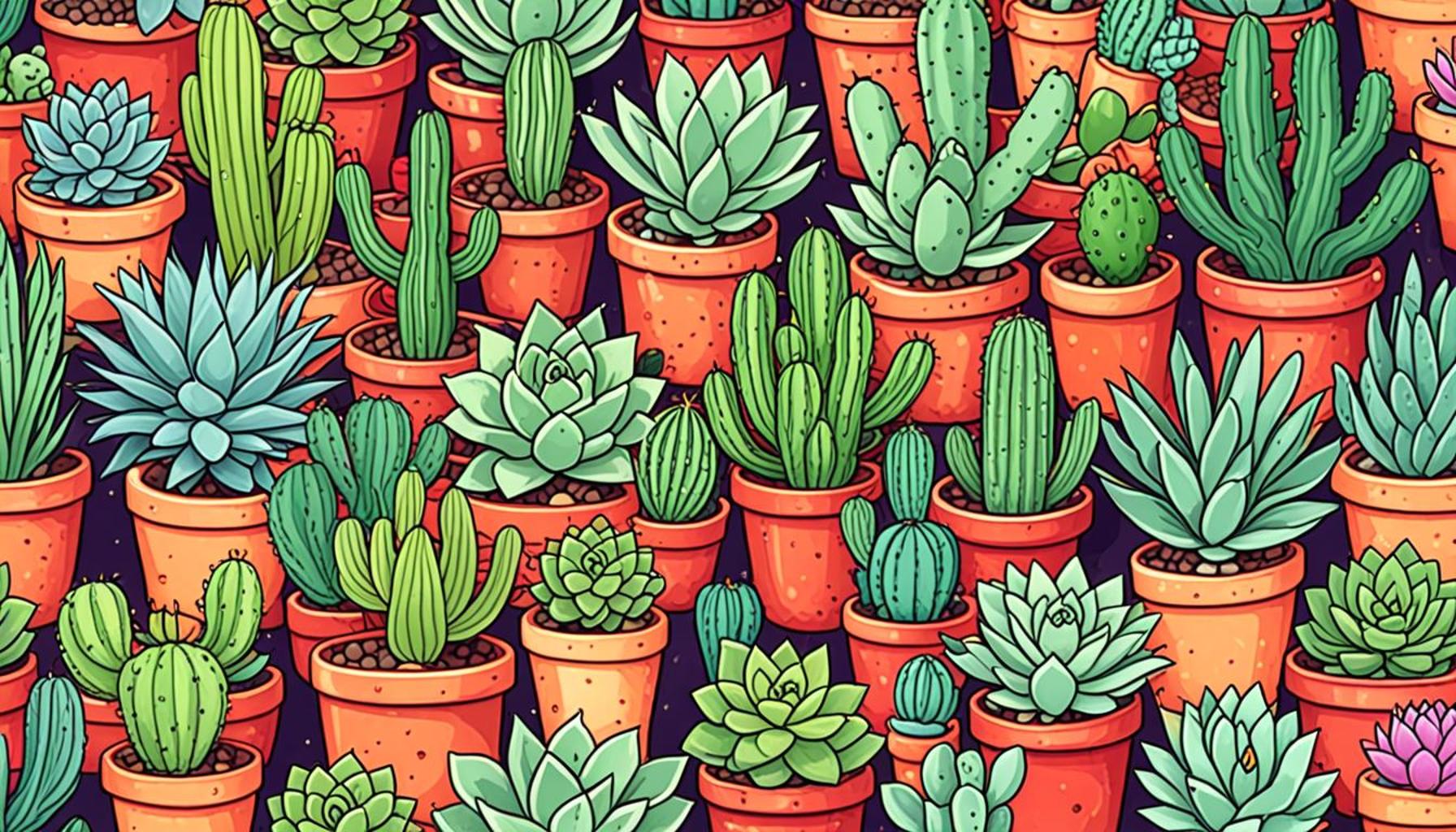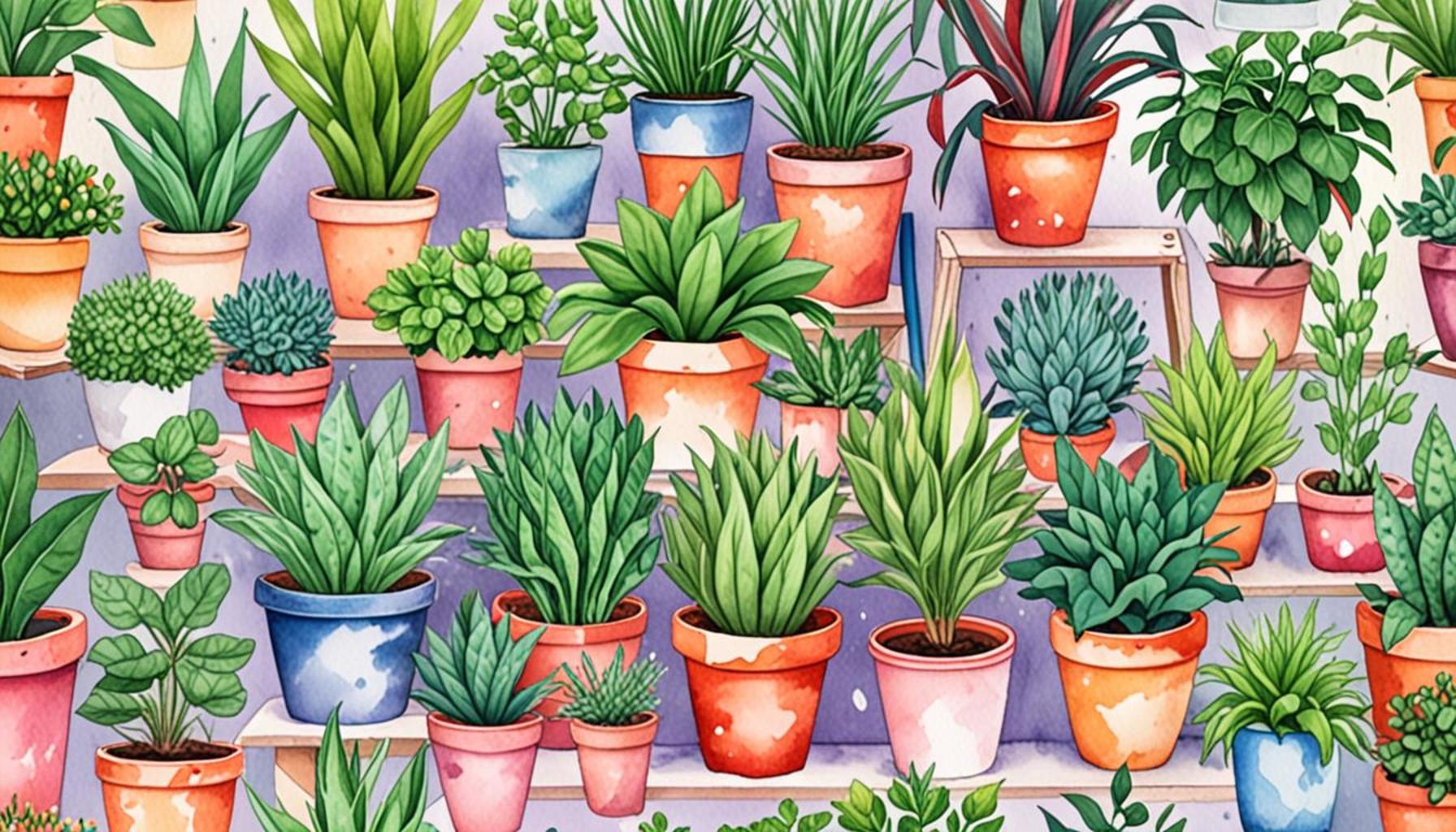How to Choose Shade Plants for Beginner Gardens
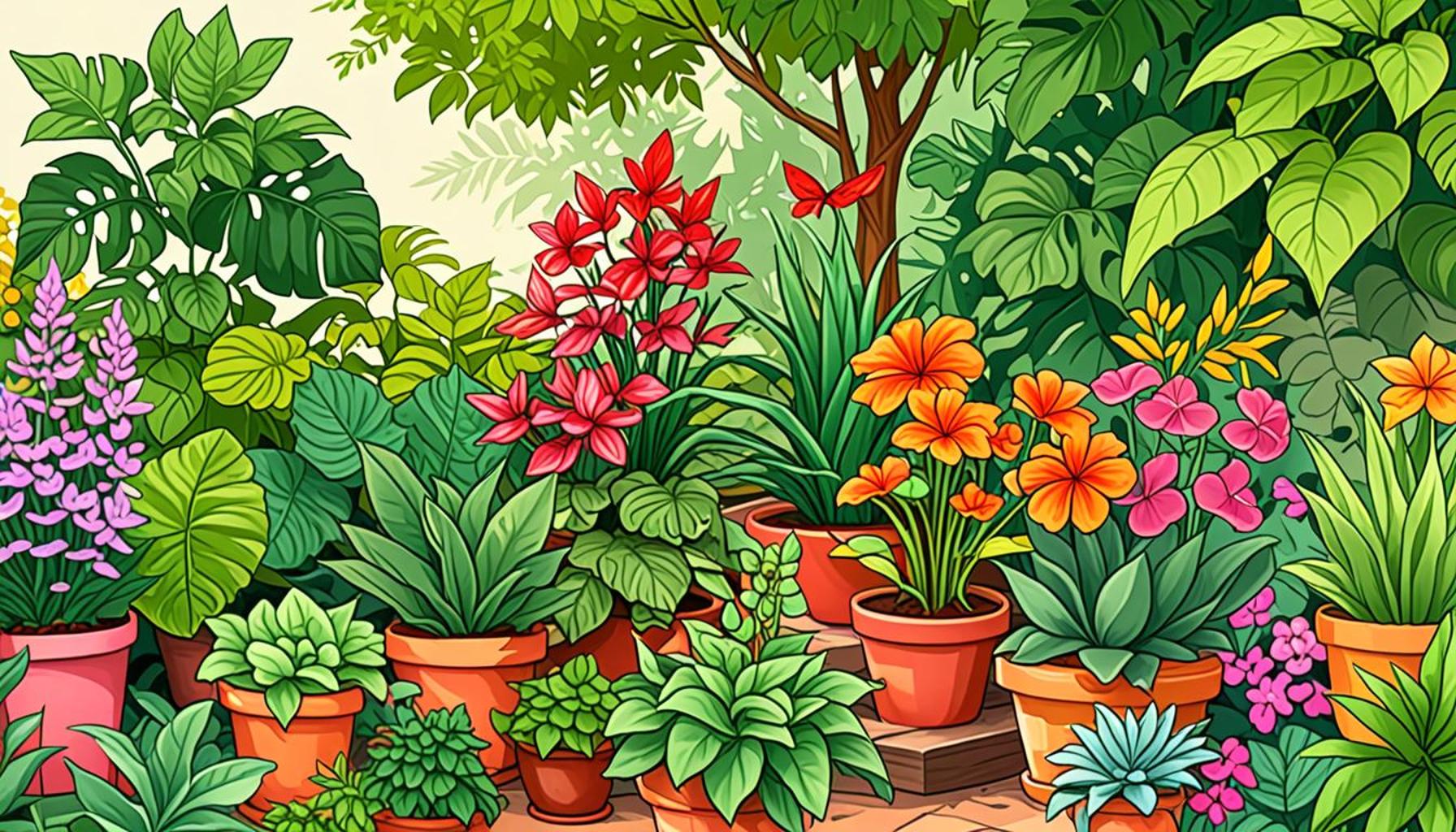
Understanding Shade Plants
Gardening in shaded areas can be a delightful challenge for beginners, offering a unique opportunity to explore a diverse range of flora that thrives away from direct sunlight. Selecting the right shade plants can transform gloomy corners into vibrant retreats filled with colors and textures. Knowledge of what to look for in shade-loving plants empowers gardeners to cultivate an enchanting garden that flourishes even where sunlight is limited.
Key Considerations for Shade Plants
When choosing plants for shaded spaces, it is critical to consider factors such as:
- Light Conditions: Understanding the specific light conditions in your garden can significantly influence plant selection. Full shade refers to areas that receive less than three hours of direct sunlight, whereas partial shade may receive around three to six hours. Dappled sunlight filters through tree leaves and creates a unique environment that many plants appreciate.
- Soil Type: The type and moisture level of your soil are essential for plant health. For example, while some plants prefer well-drained, sandy soil, others do much better in rich, loamy soil that retains moisture. Conducting a simple soil test can help determine pH levels and nutrient content, guiding your choices.
- Climate Zone: Familiarizing yourself with the hardiness zone of your area is crucial, especially in a country as varied as the United States. For instance, while astilbe thrives in zones 3 to 8, other shade plants like the Japanese blood grass (Imperata cylindrica ‘Red Baron’) are better suited for warmer zones.
Popular Shade Plants for Beginners
For novice gardeners venturing into the world of shade plants, several excellent choices stand out:
- Hostas: Famous for their lush foliage, hostas come in a variety of sizes, shapes, and stunning shades of green, blue, and gold. They are low-maintenance, making them an ideal choice for beginners experimenting with shaded garden spots.
- Ferns: With their delicate fronds, ferns add a unique texture to gardens and thrive well in moist, shaded conditions. The Christmas fern (Polystichum acrostichoides), for example, is native to the eastern United States and is known for its resilience and beauty in shady locales.
- Astilbe: This plant offers beautiful flower spikes in shades of pink, white, and red during the summer months. Its ability to thrive in moist conditions makes it excellent for areas near water features or those prone to dampness.
Choosing the right shade plants opens up a world of possibilities in your garden. With careful consideration and informed choices, beginners can create a lush, green paradise, rich with variety and life. As you delve into the enchanting world of shade gardening, you will discover not only the beauty of resilient plants but also the joy of nurturing a thriving ecosystem right in your own backyard. You’ll soon be able to appreciate the serene atmosphere and biodiversity that a well-planned shade garden can create, providing a refreshing escape for you and a habitat for various wildlife.
DON’T MISS: Click here for essential gardening tools
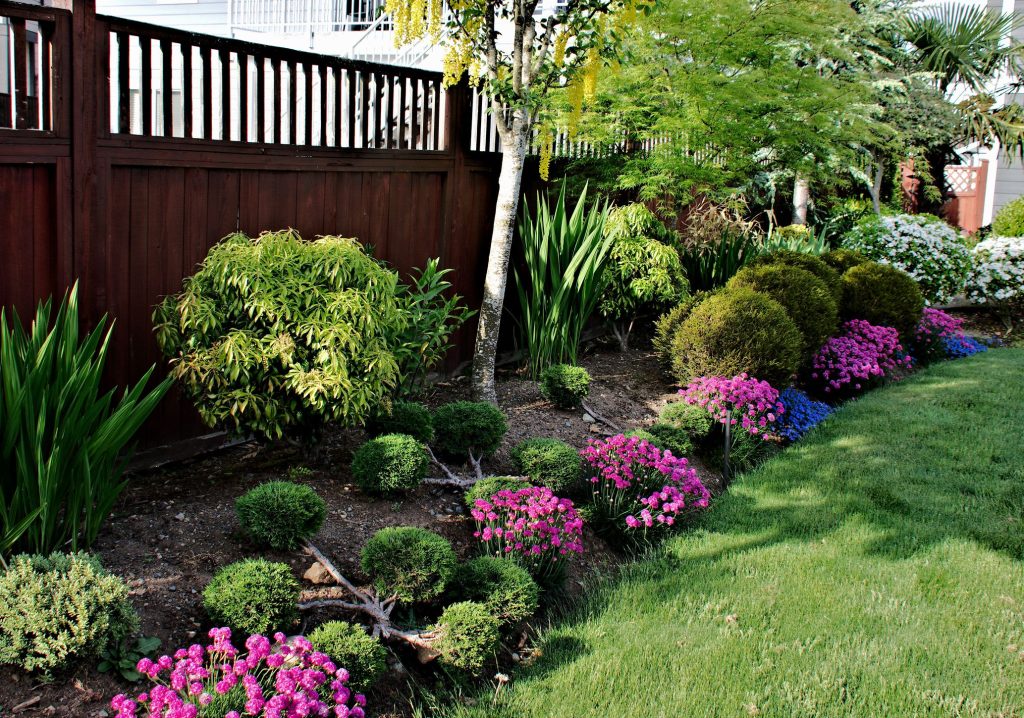
Assessing your Shade Garden Environment
Before diving into the world of shade plants, it’s essential to conduct a thorough assessment of your garden’s environment. This not only lays the foundation for a successful garden but also ensures that you select plants that will thrive in your specific conditions. Here are some crucial aspects to consider:
1. Identify the Type of Shade
Shaded areas can be categorized into different types based on the amount of light they receive throughout the day. Understanding the nuances of these categories will help you choose the right shade plants:
- Full Shade: This refers to areas that receive less than three hours of direct sunlight daily. Plants suitable for full shade are typically more tolerant of low light conditions.
- Partial Shade: These areas enjoy around three to six hours of sunlight, which is particularly beneficial for plants that require some light yet also thrive in cooler environments.
- Dappled Shade: This occurs where sunlight filters through trees or other overhead structures, providing fluctuating light patterns. Certain plants may flourish in such environments, adapting to both light and shade conditions.
2. Analyze Soil Conditions
The health and composition of your soil play a pivotal role in the success of your shade garden. Begin by conducting a soil test to assess essential factors such as:
- Soil Texture: Is your soil sandy, clayey, or loamy? Different plants have varying preferences for soil texture, so this information will influence your choices.
- Drainage: Assess how well your soil retains water. Shaded areas can often become overly moist, so selecting plants that thrive in these conditions is crucial.
- Nutrient Content: A soil test will reveal pH levels and nutrient availability. Some shade plants prefer acidic soils, while others thrive in neutral or alkaline conditions, making this information vital for successful planting.
3. Consider the Climate
Understanding your local climate is key to choosing suitable shade plants. In the United States, different regions can present diverse climate challenges, from humid summers in the Southeast to arid conditions in the Southwest. Familiarize yourself with your hardiness zone, as it dictates which plants are likely to thrive in your area. This geographical knowledge will aid in selecting resilient species that can endure local temperatures and weather patterns.
Taking the time to analyze your garden’s shade conditions, soil quality, and climate will significantly refine your plant selection process. As a beginner gardener, this groundwork might seem daunting, but it’s a rewarding investment that leads to lush, thriving garden spaces. By honing in on these essential elements, you will not only create an inviting sanctuary in your backyard, but also set the stage for exploring a magnificent array of shade plants tailored to your unique environment.
When selecting shade plants for beginner gardens, understanding the environmental conditions of your space is essential. Begin by evaluating the amount of shade in your garden, which can vary from full shade to partial shade. Full shade areas receive less than four hours of direct sunlight, while partial shade receives about four to six hours. Plants must be chosen accordingly to ensure they thrive in their specific light conditions.Consider soil quality as well. Well-draining soil that retains moisture is often ideal for many shade plants. Amending heavy, compact soils with organic matter can enhance drainage and nutrient content. Builders often overlook moisture levels, but plants suited for shade typically appreciate consistently moist, but not waterlogged, conditions.Variety is key when selecting plants. Opt for a mix of perennials and annuals to ensure your garden offers color and texture throughout the growing season. Some great options for shady areas include hostas, ferns, and astilbes. For ground cover, look for plants like creeping thyme or vinca minor, which can help prevent soil erosion and fill in blank spaces.In terms of visual impact, layering plants can create depth and interest. Taller plants can serve as a backdrop, while shorter ones can fill in the foreground, creating an appealing visual display. This method also cultivates a habitat, attracting beneficial insects and pollinators to your garden.Lastly, research the specific care requirements for your chosen shade plants. Some may require regular watering, while others may need certain fertilizers or pruning. Understanding these factors will help you maintain a vibrant and flourishing garden. To further assist you in selecting the best shade plants, below is a table detailing some advantages of popular shade plants that every beginner gardener should consider:
| Category | Benefits |
|---|---|
| Hostas | Variety in leaf color and texture, easy to care for. |
| Ferns | Adds graceful foliage, thrives in moist environments. |
| Astilbes | Brilliant fluffy flowers, attracts pollinators. |
| Creeping Thyme | Drought-resistant ground cover, aromatic foliage. |
DIVE DEEPER: Click here to enhance your plant selection skills
Choosing the Right Shade Plants
Once you’ve thoroughly assessed your shade garden environment, the next step is to select the right plants that not only survive but thrive in your specific conditions. It’s a delightful journey filled with a myriad of choices that will enhance your garden’s beauty. Here are some essential factors to consider:
1. Plant Selection Based on Type of Shade
Your shade type classification will greatly influence your plant selections. For instance:
- Full Shade Plants: Look for hardy varieties such as Hostas, known for their lush foliage, and Ferns, which add texture and a natural wild look to your garden. Astilbe is another excellent choice with its feathery flower plumes thriving in moist, shaded conditions.
- Partial Shade Plants: These areas are perfect for vibrant options like Coral Bells (Heuchera), which boast a spectrum of leaf colors, or Japanese Anemone, providing charming blooms in the fall. Bleeding Heart (Dicentra) brings unique heart-shaped flowers and works well under the dappled light of taller trees.
- Dappled Shade Plants: For fluctuating light areas, consider Brunnera macrophylla, commonly known as Siberian Bugloss, which displays striking blue flowers and heart-shaped leaves. Lamium is another handsome ground cover option, with its whimsical variegated foliage.
2. Exploring Plant Grouping and Layers
As you select plants, think about how they can be arranged for visual impact. Layering plants of different heights can create depth in your garden. Combine tall varieties like Giants of the Shade (such as Foxglove) with mid-height and low-growing plants like Ground Covers (e.g., Ajuga or Vinca minor). This layering technique not only adds aesthetic appeal but also helps maximize space utilization in your shade garden.
3. Seasonal Interest and Color Variations
When choosing shade plants, consider selecting species that provide year-round interest through seasonal changes. For example, incorporating evergreens like Hellebores will ensure color even in winter while providing a pop of color in early spring. In contrast, Fall-blooming plants like Tricyrtis (Toad Lily) can illuminate the garden as other blooms fade away. Additionally, varying leaf shapes and colors—think variegated hostas or burgundy Heuchera—will ensure your garden maintains vibrancy, creating a dynamic landscape even in low-light conditions.
4. Maintenances and Care Requirements
It’s important to consider the level of care and maintenance each plant requires. As a beginner gardener, opt for low-maintenance shade plants to build your confidence. Plants like Ferns and Japanese Forest Grass not only bask in the shade but also demand minimal upkeep, allowing you to enjoy your garden without feeling overwhelmed. Understanding a plant’s water and nutrient needs will significantly reduce the stress of garden dynamics.
By delving into the specifics of plant selection paired with environmental factors, you pave the way for a flourishing shade garden. The journey of cultivating such a unique plant ecosystem invites exploration and creativity, encouraging you to experiment and find the best combinations that suit your style while respecting the beauty of shade-loving flora!
DISCOVER MORE: Click here for expert tips on indoor plants
Conclusion: Embracing the Beauty of Shade Gardens
Choosing the right shade plants is not solely about survival; it’s about creating a captivating garden space that reflects your personality while embracing nature’s tranquility. As a beginner gardener, the opportunity to explore and connect with various shade-loving plants can be both enjoyable and rewarding. By understanding your garden’s unique lighting conditions and selecting appropriate plants—whether hardy hostas for full shade or vibrant coral bells for partial shade—you set the stage for a flourishing garden that enchants throughout the seasons.
Furthermore, layering your plants thoughtfully can enhance visual depth and break the monotony of a single growth level, offering a picturesque view no matter where you stand in your garden. With seasonal interest in mind, incorporating a variety of textures and colors ensures that your garden remains dynamic, offering new surprises each season. Engaging with low-maintenance varieties initially can boost your confidence, allowing you to enjoy your green space without feeling overburdened.
Ultimately, selecting shade plants merges artistry with horticulture, leading you on a journey of discovery that deepens your appreciation of nature. As you cultivate your shade garden, remember that every leaf, bloom, and shadow contributes to an environment that not only supports life but uplifts your spirit. So grab your gardening gloves and embark on this enchanting adventure—one that promises peace, beauty, and endless possibilities!
